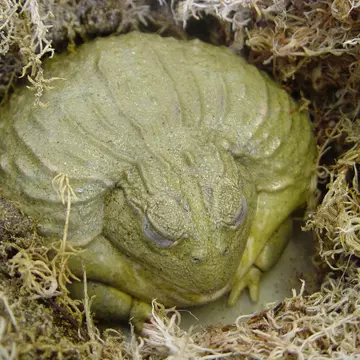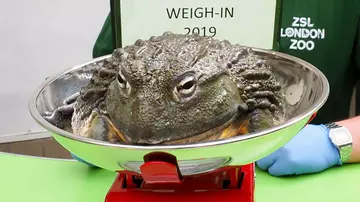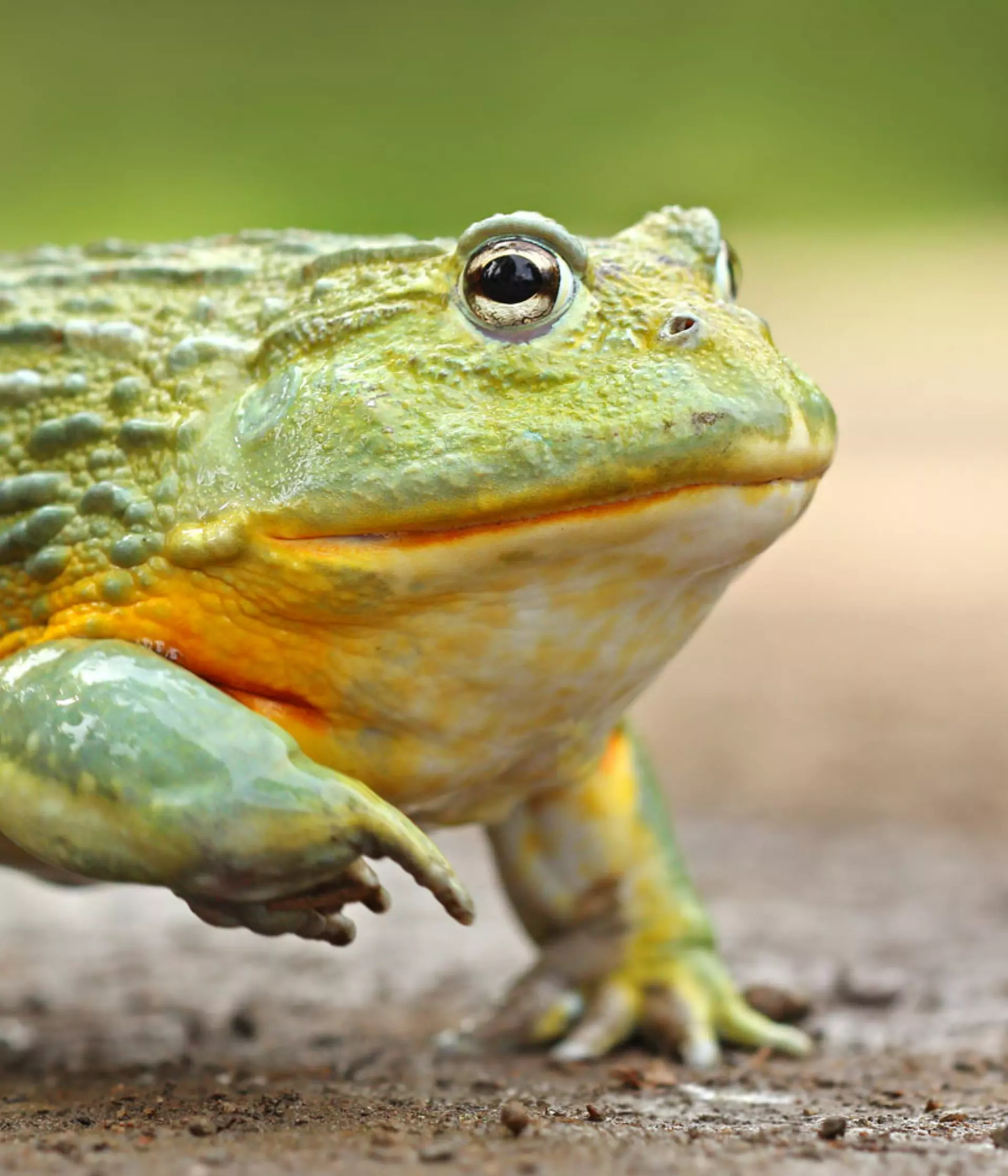
African bullfrog facts
- Male bullfrogs are incredible parents and look after their young. Tadpoles develop in small pools which often dry out, if the pool dries out too much the male will dig a channel to a larger pool and the young can continue their development without the risk of drying out.
- These frogs are renowned for their monstrous appetite. The general rule for this predator is: if it moves, it’s a meal. African bullfrogs have been known to eat large birds, monitor lizards, snakes, and even other African bullfrogs!
- The African bullfrog is fossorial for most of the year, which means that during this time, it remains in burrows or cocoons. It emerges at the start of the rains to breed in shallow pools and ditches.
We no longer have African bullfrogs at London Zoo - learn more about our animals in the Secret Life of Reptiles and Amphibians habitat.

What do African bullfrogs look like?
These frogs have large bodies with broad ridged backs and strong hind legs. The sexes can be identified through the colour of their underbellies. Females usually have creamy beige bellies, whilst the males tend to have yellow or orange bellies and throats. On all frogs the rest of the body is usually coloured olive green.
What do bullfrogs eat?
Invertebrates, lizards, birds and other small vertebrates - almost any small animals that will fit in their mouths!

African bullfrog habitat
Dry savannah, moist savannah, subtropical or tropical dry shrubland.
Where do African bullfrogs live?
Angola, Botswana, Kenya, Malawi, Mozambique, Namibia, South Africa, Swaziland, Tanzania, Zambia, and Zimbabwe.
African bullfrog threats
Habitat loss, forest clearing.
Our Zookeepers are raising mountain chickens in a biosecure facility at the Zoo, which will act as a source for future populations in Montserrat. Discover how we're leading a recovery of species across the globe.
